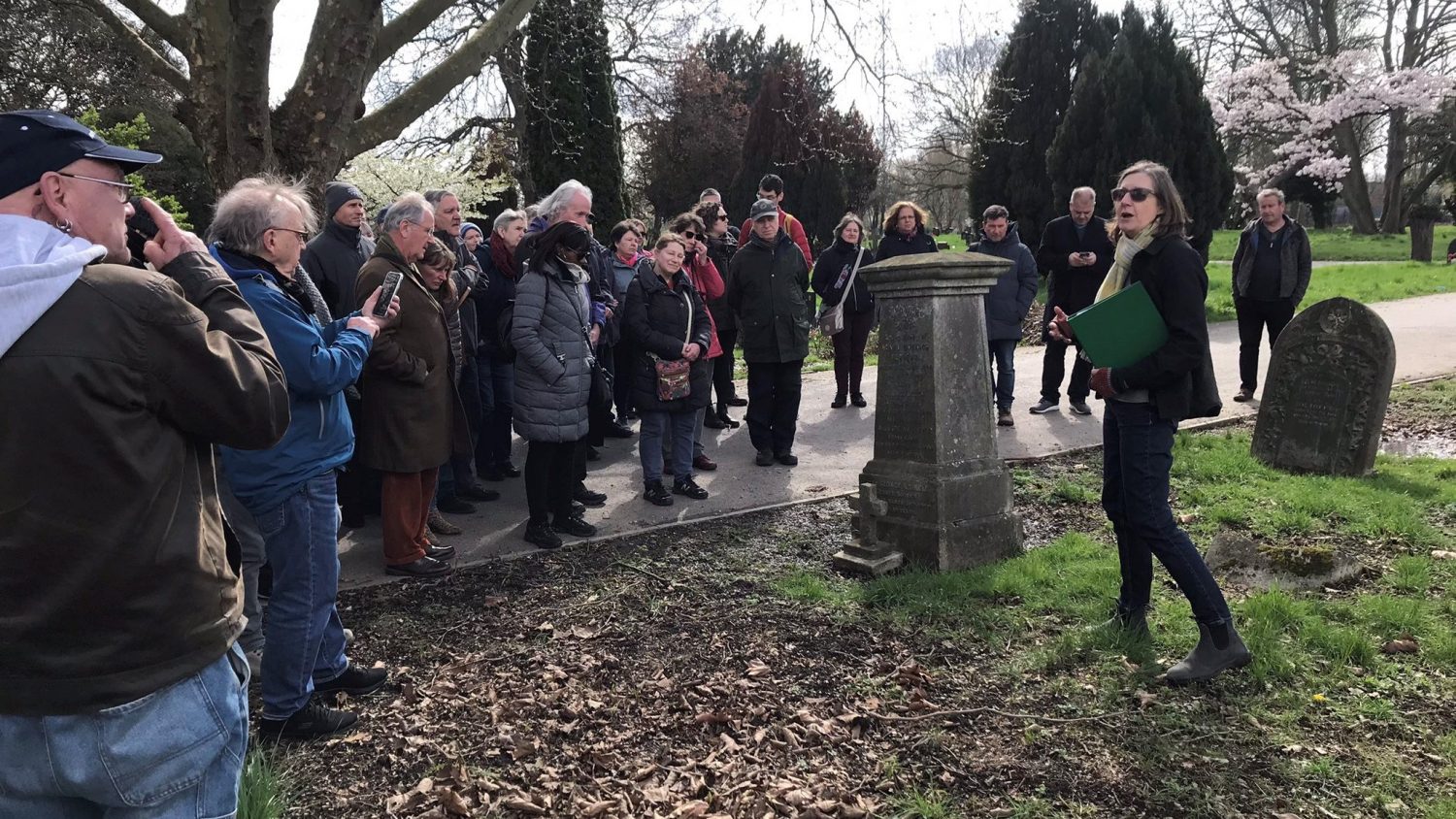Five minute read
Poppy’s HQ is based in Lambeth Cemetery. We asked Tracey Gregory and Geoff Simmons — local Lambeth and Tooting residents with a passion for uncovering and sharing stories from the past — to talk us through some of the cemetery’s hidden histories, from music hall to migration to orchid mania.
Tracey takes us back to the beginning: “What makes a place into the place it is today is what went before. In the mid-nineteenth century, outbreaks of cholera across London meant that burial grounds were becoming overcrowded and unsafe. The Burial Act of 1852 allowed local authorities to buy land outside the city of London in the suburbs.
“That’s when the Lambeth Cemetery site was bought, although it’s been expanded since then, and it was first opened in 1858.
"Even without the cholera outbreaks, the population boom in the Victorian era meant that cemeteries and churchyards in inner London were filling up. The early Victorian times were a period of great change.”
Over 150 years later, there are now around 250,000 people buried in Lambeth Cemetery, and burials still continue today.
Cemeteries are filled with people's stories
“I love wandering around the cemetery, especially when the blossom is out,” says Geoff. “Lambeth Cemetery is a beautiful place and a proper working cemetery with a vibe of its own.
“During lockdown, I’d come down here, photograph whatever caught my eye and then try to find out more about it. Cemeteries are filled with stories of people — and these stories keep emerging.”
“You can explore any local or social history issue, or a certain period, through the cemetery,” agrees Tracey. “Death is a great leveller — we are all born and we all die. Yet there are lots of stories that aren’t told.”
Uncovering untold stories
It’s the untold stories that most fascinate Geoff and Tracey. But it’s not always easy to find out about how and where people lived and died, and to uncover the stories of their lives.
“If I want to find out about parts of someone’s life, it can help to find out where they are buried,” says Tracey. “There are online sources you can use, like Find a Grave or Deceased Online. You can also go to the cemetery office to look at the records. The Lambeth offices are in Streatham Cemetery.”
“This research often shows who they are buried with,” adds Geoff. “So you can see whether it’s a public grave where many people are buried, or whether the person was buried with children or a husband or wife. At the cemetery office, you can ask for a plan to locate the plot within the cemetery.”
As well as doing primary research like this, you can discover more from the thriving community of people interested in local history, who often post their findings on blogs like Cemetery Club or London Overlooked. Geoff and Tracy are happy to draw on their research, always crediting and fact-checking what they find out in this way, and then sharing what they’ve learnt with the community.
Enthusiasm and excitement on the cemetery tours
“I’ve always been interested in history, but later in life I also realised that I am really at home on the street,” says Geoff. “I like chatting to people over the fence, talking to neighbours, doing community stuff, whether it’s with schools or with older people.
“I love being a tour guide, because I get the chance to talk about what’s happening now, what’s new, and how that relates to what happened in the past. Doing the most recent Lambeth Cemetery tour was one of my best memories of the year — there was such enthusiasm among the people who came.”
“People come on the tours for such different reasons,” adds Tracey. “Some are from Tooting, some come because they are interested in music hall, and some because they are the descendants of people buried here. We had about 65 people on the last walk. They come with a particular area of interest, but end up getting excited about all of it.”
Out of all the hundreds of hidden histories in Lambeth Cemetery, we asked Tracey and Geoff to each share one story that was special to them.

